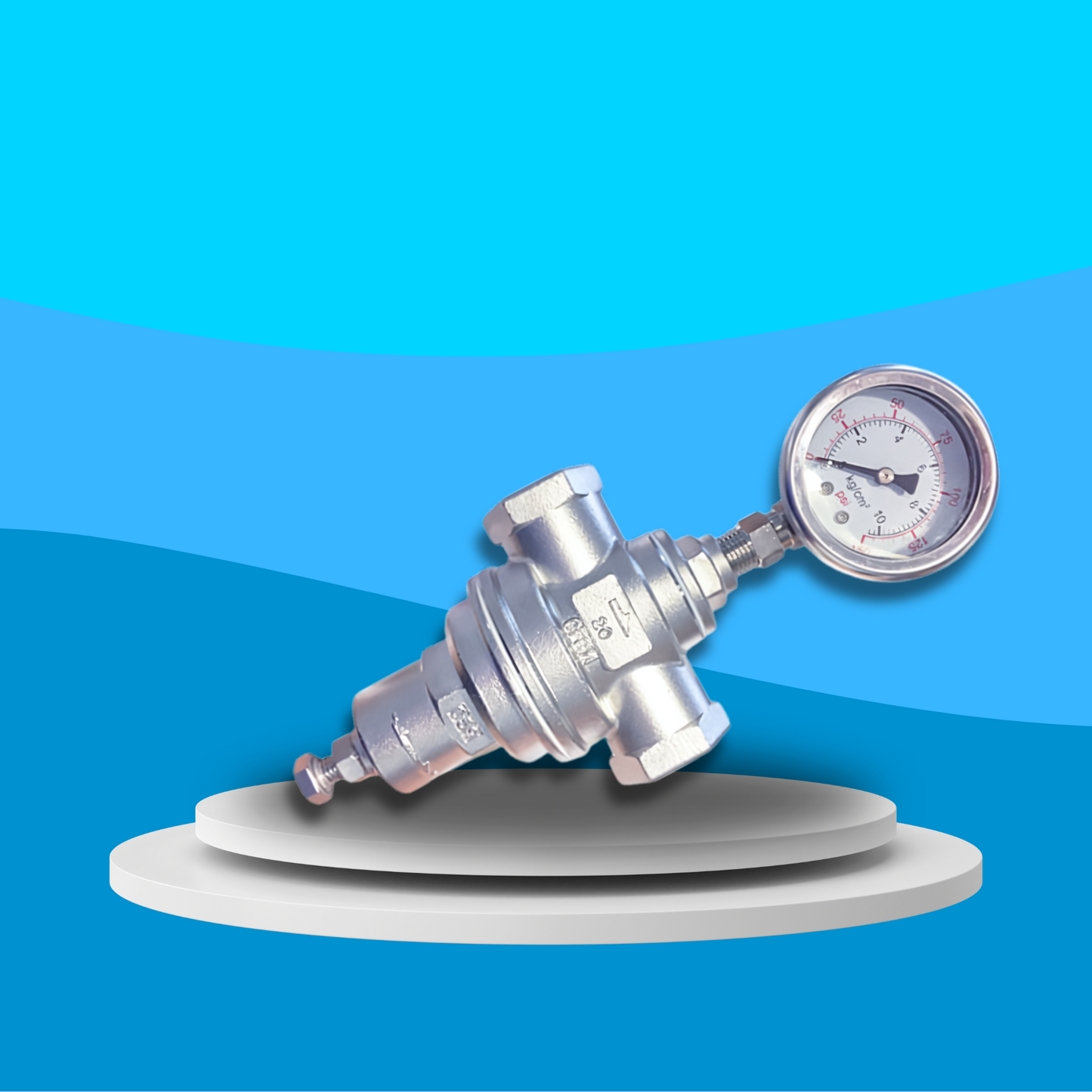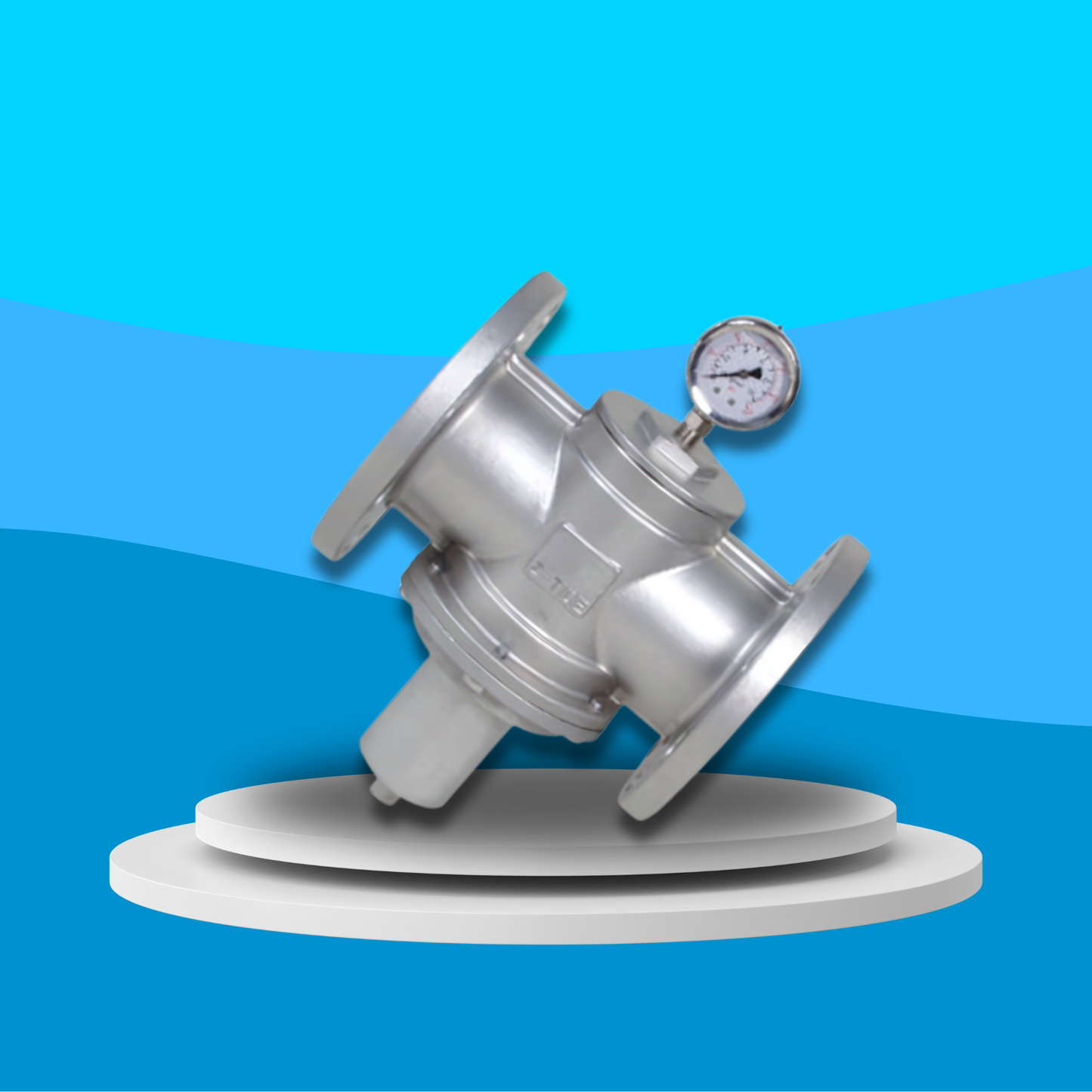Wras Valve
WRAS Approved Stainless Steel EPDM Pressure Reducing Valve
WRAS Approved Stainless Steel EPDM Pressure Reducing Valve
Couldn't load pickup availability
WRAS Certified
Introducing the WRAS Approved Stainless Steel EPDM Pressure Reducing Valve, designed to deliver precise and reliable control of fluid pressure in various applications. These valves are constructed with a 316 stainless steel body and an EPDM seat, ensuring excellent durability and resistance to wear and corrosion. Available in both threaded and flanged versions, these valves offer adjustable outlet pressures from 1 to 10 bar and come equipped with a gauge for accurate pressure monitoring.
Key Features:
- WRAS Approved: Certified to meet stringent WRAS standards for water safety and quality.
- Durable Construction: Made from 316 stainless steel with EPDM components for enhanced durability and corrosion resistance.
- Adjustable Pressure: Outlet pressures can be adjusted from 1 to 10 bar for precise control.
- Versatile Design: Available in both threaded and flanged versions to suit various installation requirements.
- Temperature Range: Suitable for temperatures from -15°C to 100°C.
- Reliable Performance: Rated PN25 to ensure consistent and reliable pressure control.
- Easy Integration: Designed for seamless integration into existing fluid control systems.
Specifications:
- Gauge: Stainless Steel
- Upper Cover: 316 Stainless Steel
- O-ring: EPDM
- Body: 316 Stainless Steel
- UH-ring: EPDM
- Spring: Spring Steel
- Lower Cover: 316 Stainless Steel
- Washer: Brass
- Adjusting Stem: 304 Stainless Steel
- Fixed Bolt: 304 Stainless Steel
- U-ring: EPDM
- Piston: 316 Stainless Steel
- Sealing Spacer: EPDM
- Shaft: 316 Stainless Steel
- Diaphragm: EPDM
Share


FAQ's
What is the difference between a valve and an actuator?
What types of actuators are available?
The main types of actuators are:
Pneumatic actuators – use compressed air for fast, reliable operation.
Electric actuators – use electrical power for precise control.
Hydraulic actuators – use fluid pressure for high-torque applications.
Each type offers unique advantages depending on the environment, media, and system control needs.
How do I choose the right actuator for my valve?
To select the correct actuator, consider:
Valve type and torque requirement
Power source available (air, electric, or hydraulic)
Operating environment (temperature, humidity, hazardous area)
Control signal type (on/off or modulating)
Matching actuator torque and compatibility with the valve’s ISO mounting ensures reliable performance.
What are the main types of valves used in automation?
The most common valves in automated systems include:
Ball valves – for tight shutoff and quick operation.
Butterfly valves – for larger flow control with compact design.
Globe valves – for precise throttling and flow regulation.
Check valves – to prevent backflow.
Gate valves – for full bore flow isolation.
What’s the difference between a double-acting and spring-return actuator?
Double-acting actuators use air (or power) to both open and close the valve.
Spring-return actuators use air to open (or close) the valve, and a built-in spring to automatically return it to a safe position when power or air is lost — ideal for fail-safe operation.
How often should valves and actuators be serviced?
Regular maintenance intervals depend on operating conditions, but a good rule of thumb is to inspect every 6–12 months.
This includes checking for leaks, lubrication, seal wear, and actuator responsiveness to prevent unexpected downtime.


